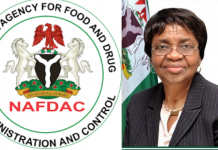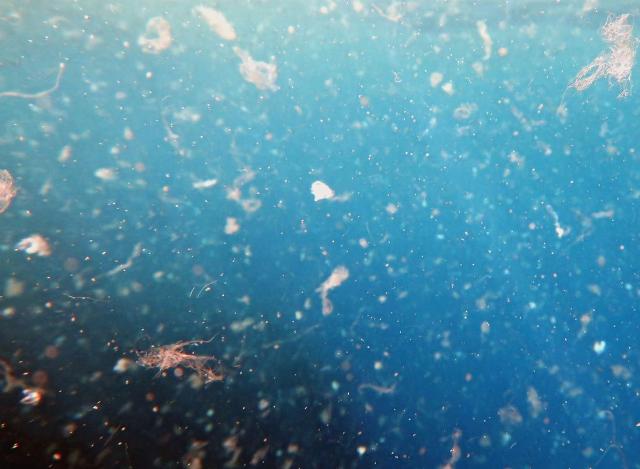Isabelle Gerretsen
Microplastics have been found on every part of the planet. The tiny particles of this anthropogenic material have been found buried in Antarctic sea ice, inside the guts of marine animals inhabiting the deepest ocean trenches, and in drinking water around the world.
Now a new study has found that bottled water can contain up to 100 times more tiny pieces of plastic than was previously estimated. The average litre of bottled water contains almost a quarter of a million nanoplastic fragments, according to a study by researchers at Columbia and Rutgers universities in the US. The researchers analysed five samples of three common bottled water brands and found nanoplastic levels ranging from 110,000 to 400,000 per litre, with an average of around 240,000. The scientists say much of the plastic appears to be coming from the bottle itself and that it is not known whether the ingestion of plastic poses a serious health risk.
A major review of the scientific evidence by the World Health Organization in 2019 and 2020 concluded there was still too little research to determine if consuming or inhaling microplastics posed a risk to human health. It did warn, however, that the smallest fragments – measuring less than 10 micrometres in size – are likely to be taken up biologically. WHO has called for a reduction in plastic pollution to reduce human exposure.
But is it really possible to avoid microplastics? Here’s what we know about where they are found.
Microplastics are in your food
Plastics aren’t just ubiquitous in water. They are also spread widely on agricultural land and can even end up in the food we eat. According to a 2022 analysis, sewage sludge, which is used as crop fertiliser, has contaminated almost 20 million acres (80,937sq km) of US farmland. This sludge contains microplastics and PFAS (per- and polyfluoroalkyl substances), also known as “forever chemicals”. A study from Cardiff University in the UK found that 86 trillion to 710 trillion microplastic particles contaminate European farmland each year.
This means that, unwittingly, we may be eating tiny plastic fragments with every bite we take. But some plants seem to take up these plastics more than others. For example, some analysis seems to indicate that plastics tend to accumulate in plant roots, meaning leafy vegetables such as lettuces may have lower concentrations than carrots, radishes and turnips. While the health effects of ingesting microplastics are still not clear, they have been found to make their way into the human bloodstream. (Find out more about how microplastics are infiltrating the fruit and vegetables you eat.)
Could biodegradable plastics help?
The backlash against single-use plastics has seen many companies seeking to use alternatives that claim to be more biodegradable or compostable. But in some cases these alternatives may actually be compounding the microplastic problem. Research by scientists at the University of Plymouth in the UK found that bags labelled as “biodegradable” can take years to disintegrate, and even then they mostly break down into smaller pieces rather than their component chemical parts. (Learn more about why biodegradables won’t solve the plastic crisis in this article by Kelly Oakes.)
What about switching to glass bottles?
Swapping out plastic packaging could potentially help to reduce exposure – tap water has lower levels of microplastics than water from plastic bottles. But it would also have environmental repercussions. While glass bottles have a high recycling rate, they also have a higher environmental footprint than plastic and other packaging used for liquids such as drinks cartons and aluminium cans. This is because the mining of silica, which glass is made of, can cause significant environmental damage, including land deterioration and biodiversity loss. Even with these non-plastic receptacles, it’s hard to escape microplastics entirely. Studies led by Sherri Mason at Pennsylvania State University have found they are not only present in tap water, where most of the plastic contamination comes from clothing fibres, but also sea salt and even beer. Read more about whether glass or plastic is better for the environment.
Can anything be done to reduce microplastics?
Fortunately, there is some hope. Researchers are developing a number of approaches to help get rid of the plastic pollution in our environment. One approach has been to turn to fungi and bacteria that feed on plastic, breaking it down in the process. A species of beetle larvae that can devour polystyrene has also offered another potential solution. Others are looking at using water filtration techniques or chemical treatments that can remove microplastics. (Read about how magnets could be used to fight microplastic pollution.)
BBC





























































